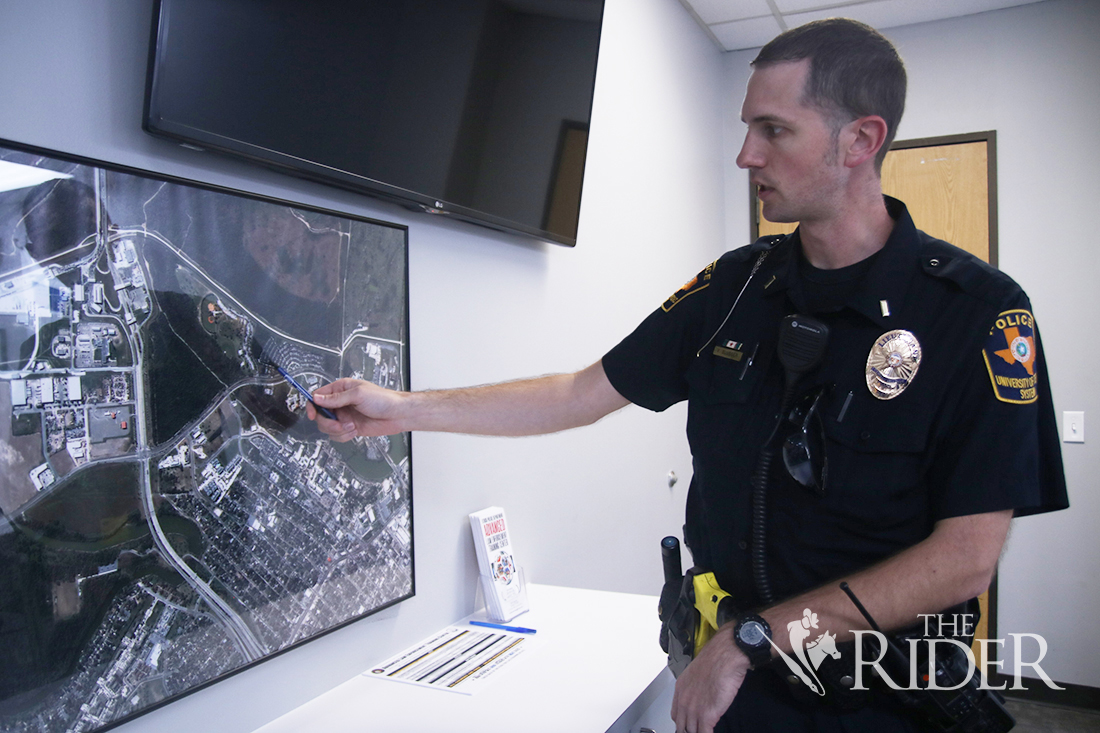
Amid a wave of threats and shootings on the rise across the country, University Police and Counseling Center continue to offer their protection and support with recurrent trainings and sessions.
Lt. Van Slusser said there are a variety of things the UTRGV Police Department has done and will continue to do to be ready in case of an active shooter situation, such as preparing internally through training and through education efforts and outreach with the community.
“All of our officers go through what’s called ALERT,” Slusser said. “That’s Advanced Law Enforcement Response Training and there’s several different levels of that and our goal is to get every single one of our commission officers through the level one course, which is the basic one. And then, we have on top of that, some different and more advanced ALERT-level trainings that our officers also attend.”
The next active shooter training exercise will take place in December on the Brownsville campus. The last training exercise took place December 2018 on the Edinburg campus.
Slusser said University Police has also changed its staffing and patrol posture within the last six months. Some changes include increasing the number of officers out on patrol and allocating the largest number during the peak population times on campus.
“We’ve also trained and deployed more bike patrol officers, which allows our officers to be closer to the inner core of campus, to those inner buildings and the inner walkways where the students are,” he said. “That would drastically reduce our response time in the event of an active shooter. So, in the event of an active shooter, the sooner we know about it, and the sooner we respond, is really the sooner that that event ends.”
Slusser said the national average response time for law enforcement to reach an active shooter incident is three minutes but the Civilian Response to Active Shooter Event (CRASE) training offered to students, faculty and staff prepares them for those three minutes.
“In CRASE, we try to open up everyone’s minds to the possibility of what can happen and then those options that they have available to them and a lot of that comes down to situational awareness and being aware of your surroundings,” Slusser said.

The lieutenant said the CRASE trainings are free and open to all, but due to the nature of the content, may not be appropriate for younger-aged individuals.
The next available CRASE trainings will be from 9 to 11:30 a.m. Sept. 17 in Cortez Hall on the Brownsville campus, and at the same time Sept. 19 at the University Library on the Edinburg campus.
Slusser said any portion of the university that would like to arrange a training for their work group can reach out and request one from the UTRGV Police Department.
Christopher Albert, director of the Counseling Center, said although the department doesn’t have a specific event planned for the mass shootings as of press time, it does provide individual and group counseling for all students and several workshops throughout the year.
Albert commended the recent event initiated by the Center for Diversity and Inclusion and the Student Rights and Responsibilities department where students were welcomed to create cards and send them with messages of support to the communities in El Paso, and Dayton, Ohio.
He said the activity not only helps those communities, but also students.
“When you have something where you step up and you try to help, that kind of helps reduce your own anxiety and can help reduce your own feelings of sadness because you’re doing something and … you’re connecting [with the] community and that social support is key to a good emotional and psychological health,” Albert said.
Ruby Charak, director of the Adversities in Childhood and Trauma studies (ACT) lab and clinical psychologist specializing in PTSD and child adversities, said PTSD and depression are seen in those who have witnessed or were in a mass shooting six times more than normal populations.
Charak, also an assistant professor in psychological science, said one way to deal with anxiety and sadness is to “direct your energies” in a positive way with social gestures and related actions. Although, if a person’s grief is severe, she recommends visiting a professional counselor, psychologist or social worker.
Albert said if someone is making threats or posting about committing a mass shooting, students should contact the authorities, campus police or use Vaqueros Report It.
Slusser also recommended to download the Campus Shield app, where anyone can submit videos or photos anonymously.
In case of an emergency, the app also dispatches the user’s location within 20 feet, utilizing the wireless network set up throughout campus.
Charak and Slusser also encourage students to reach out to the authorities if they witness any type of strange behavior.
“We would much rather look into 100 reports that turn out to be nothing rather than miss that one that was something,” Slusser said.
Charak said because the field of gun violence is not funded much researchwise, there are no set profiles that can be used to identify any future perpetrators.
“Since I’m a clinical psychologist, [people will] be like, ‘Oh, is it that all the people who are mentally ill, that they are the ones?’ No. In fact, it’s a myth that people with mental illness are violent, in fact most of them are not. In fact, most of them are victims of violence,” Charak said. “So this whole thing about many politicians and media houses saying, ‘Oh, they’re mentally ill people’– Yes, of course, they’re disturbed. To kill a human being is not normal, but it’s not that they have a mental disorder. So, yeah, just making mental illness a scapegoat is not OK. That’s not the reason for gun violence.”





